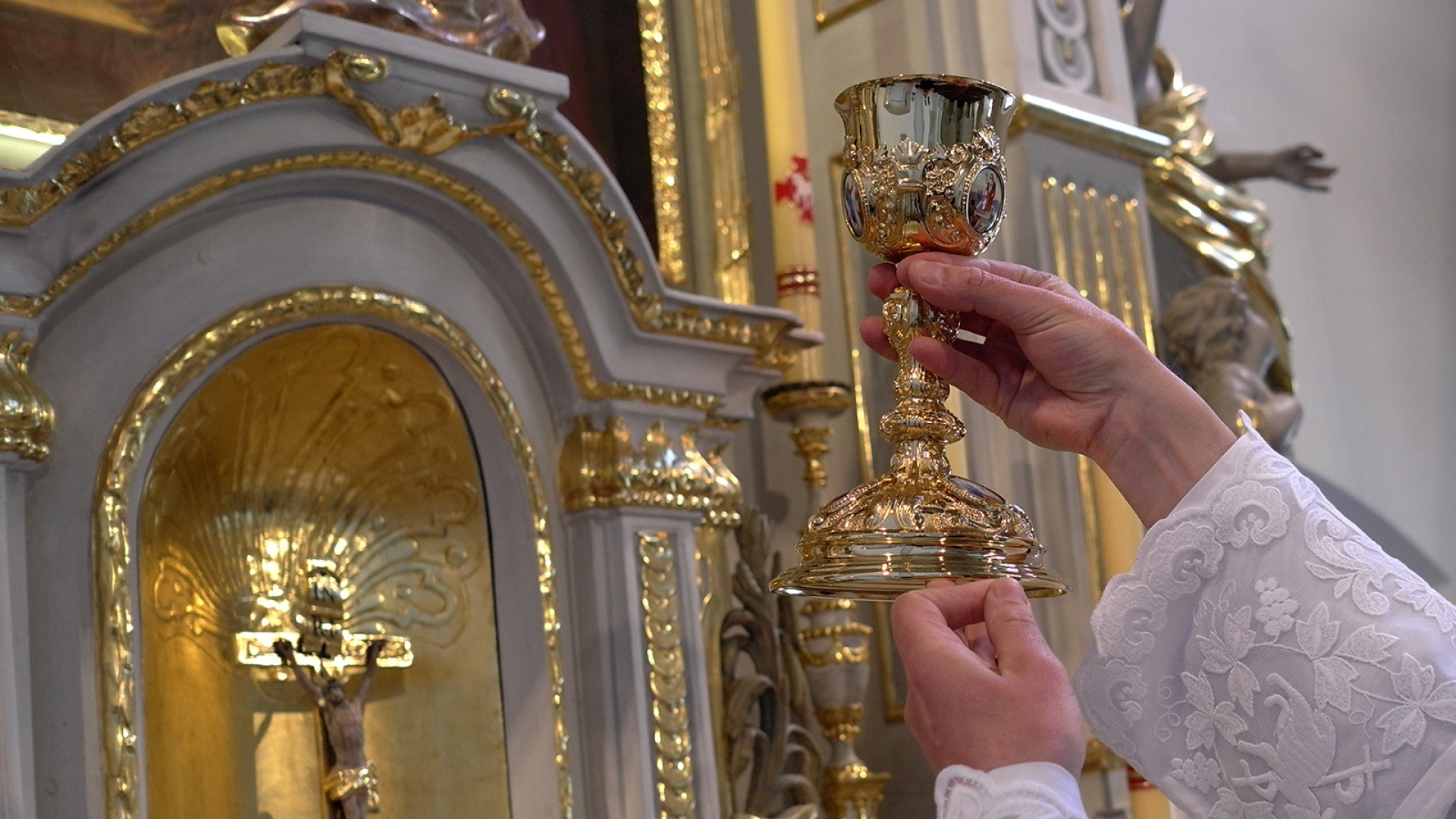A Most Striking Change

The Catholic Faith is manifested through the Church's official prayers, the liturgy, of which the Mass is the most perfect expression. Since Vatican II the nature of the Mass has been significantly altered by a new rite.
A New Rite
One of the most controversial issues within the Catholic Church today is the question of the New Mass or Novus Ordo Missae. This Novus Ordo Missae, or new way of saying Mass, was introduced in 1969 by Pope Paul VI.
An idea behind the changes
The liturgist in charge of elaborating the new rite, Archbishop Annibale Bugnini, made it clear that the main intention was to design a rite able to enforce the new ecumenism adopted by Vatican II. He declared in 1965:
We must strip from our Catholic prayers and from the Catholic liturgy everything which can be the shadow of a stumbling block for our separated brethren that is for the Protestants…
To accomplish this ecumenical goal, he solicited the help of 6 Protestant ministers.
Focus on Man
In the new rite, man has become more of the focus, not so much God. The priest and faithful gather for a meal to share with one another Christ’s loving presence.
This desire man-centered liturgy has produced noticeable changes: using vernacular languages, introducing "Mass facing the people" and equating the laity's role with that of the priest. Even the Blessed Sacrament has been removed from the visible center in the church and is now often reserved away from the main altar and out of view.
Also many abuses have been introduced, such as lay Eucharistic Ministers, Communion in the hand, and altar girls. Even Vatican II's instruction that Gregorian chant should be given "pride of place" is ignored.
The consequences of these changes have been, among many others, a shocking reduction in the number of religious vocations and a decrease in weekly attendance at Mass. Sacramental confession, as an important preparation before receiving the Eucharist, has also steadily declined.
Focus on God
The traditional Mass, on the contrary, focuses on the worship of God and the true sacrificial nature of the Mass. The Catholic Church teaches that Jesus Christ, through the priest, offers His Body and Blood to His Father in atonement for all the sins of humanity; Holy Communion is a consequence of this sacrifice and allows men to receive the effects of the sacrifice of reparation.
The use of a sacred language such as Latin for the worship of God, the many signs of respect and adoration to show our loving submission to Him, the unique role of the ordained priest who takes the place of Christ at the altar, a reverent and humble reception of Holy Communion kneeling with the host placed on the tongue, the awe-inspiring sacred chants are all indicative of how the Mass directs us to God.
Return to Tradition
A return to the traditional form of the liturgy has consistently produced an increase in vocations, a better attendance at Sunday and even at daily Mass, a more frequent use of the sacrament of penance, and overall a heightened awareness of the sacred, sacrificial nature of the liturgy.
The traditional Mass and all of the doctrine that it conveys is the means for a true restoration of all things in Christ.